Bhanoth, Pavan Naik (2024) Smart Waste Management: Object Classification for Recycling Optimization using Computer Vision and Deep Learning. Masters thesis, Dublin, National College of Ireland.
Preview |
PDF (Master of Science)
Download (841kB) | Preview |
Preview |
PDF (Configuration Manual)
Download (223kB) | Preview |
Abstract
In today’s world, the waste generation is increasing exponentially, due to several factors like the surgical waste in COVID-19 pandemic, online shopping and packages, and population growth. There are different ways to mitigate and manage waste like circular economy initiatives, technological solutions, and policies and regulations. The main aim of this research is to develop a state-of-the-art waste classification system for waste management. The traditional methods for classifying waste depend on CNN (Convolutional Neural Networks), CNN models can differentiate the waste, but when similar waste types are present, it will be difficult to predict the type of waste and handle complex patterns for various waste streams. To address these limitations present in the current methodology, a novel framework integrates the benefits of different machine learning models like Convolutional Neural Networks and RNNs (Recurrent Neural Networks), these models specifically use LSTM (Long Short-Term Memory) networks for identifying complex patterns and temporal dependencies and a ResNet50-based CNN for extracting features from the dataset. In the individual models accuracy will be low compared to hybrid models, as hybrid models utilize the benefits from different machine learning models to enhance the predicting accuracy of the model. An extensive dataset is used for training the model, and the Adamax algorithm is utilized to improve theperformance, the model is evaluated with several metrics and acquires an accuracy of 89.45%, this model has shown great performance in ROC analysis, recall, precision, and F1-score. With the assistance of this approach, there is a great chance to provide scalable and precise solutions for sorting waste automatically, and finally navigating towards more reliable waste management practices.
| Item Type: | Thesis (Masters) |
|---|---|
| Supervisors: | Name Email Kelly, John UNSPECIFIED |
| Subjects: | Q Science > QA Mathematics > Electronic computers. Computer science T Technology > T Technology (General) > Information Technology > Electronic computers. Computer science Q Science > QH Natural history > QH301 Biology > Methods of research. Technique. Experimental biology > Data processing. Bioinformatics > Artificial intelligence > Computer vision Q Science > Q Science (General) > Self-organizing systems. Conscious automata > Artificial intelligence > Computer vision G Geography. Anthropology. Recreation > GE Environmental Sciences > Environment Q Science > Q Science (General) > Self-organizing systems. Conscious automata > Machine learning |
| Divisions: | School of Computing > Master of Science in Data Analytics |
| Depositing User: | Ciara O'Brien |
| Date Deposited: | 07 Aug 2025 13:50 |
| Last Modified: | 07 Aug 2025 13:50 |
| URI: | https://norma.ncirl.ie/id/eprint/8464 |
Actions (login required)
 |
View Item |

 Tools
Tools Tools
Tools